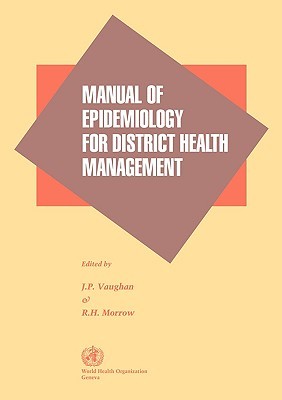
- We will send in 10–14 business days.
- Author: J P Vaughan
- Publisher: World Health Organization
- ISBN-10: 924154404X
- ISBN-13: 9789241544047
- Format: 21 x 29.7 x 1.1 cm, minkšti viršeliai
- Language: English
- SAVE -10% with code: EXTRA
Manual of Epidemiology for District Health Management (e-book) (used book) | bookbook.eu
Reviews
Description
A step-by-step guide to the use of epidemiology as a tool for improving the management of health services. Addressed to general health workers, the book uses clear definitions, analogies, examples, checklists, sample forms and calculations, and abundant illustrations to demystify the methods of epidemiology and show how they can work in concrete situations. Particular emphasis is placed on the simple knowledge and skills needed to collect and then use epidemiological data to monitor health problems commonly found in developing countries. The book shows how a four-phase epidemiological approach, involving descriptive, analytical, intervention, and evaluation epidemiology, can supply virtually all the information needed to pinpoint health problems, design targeted interventions, and define reliable indicators for monitoring progress. Other chapters offer guidance in the collection of demographic data, the conduct of routine health surveillance, the use of epidemiology to control an epidemic, and the design of special surveys to collect additional information. The second half of the book concentrates on the analysis, presentation, and use of results. Topics covered include the use of record forms and coding, methods of data processing and analysis, and the presentation of health information in tables, figures, graphs, diagrams, charts, and maps. The final chapter, which constitutes the core of the manual, shows how the knowledge and skills previously described can be used to formulate plans for the management and monitoring of district health services. "... admirable ... basic epidemiological techniques are precisely described ... deserves to be a standard text in the district..." - The Lancet
EXTRA 10 % discount with code: EXTRA
The promotion ends in 21d.11:34:08
The discount code is valid when purchasing from 10 €. Discounts do not stack.
- Author: J P Vaughan
- Publisher: World Health Organization
- ISBN-10: 924154404X
- ISBN-13: 9789241544047
- Format: 21 x 29.7 x 1.1 cm, minkšti viršeliai
- Language: English English
A step-by-step guide to the use of epidemiology as a tool for improving the management of health services. Addressed to general health workers, the book uses clear definitions, analogies, examples, checklists, sample forms and calculations, and abundant illustrations to demystify the methods of epidemiology and show how they can work in concrete situations. Particular emphasis is placed on the simple knowledge and skills needed to collect and then use epidemiological data to monitor health problems commonly found in developing countries. The book shows how a four-phase epidemiological approach, involving descriptive, analytical, intervention, and evaluation epidemiology, can supply virtually all the information needed to pinpoint health problems, design targeted interventions, and define reliable indicators for monitoring progress. Other chapters offer guidance in the collection of demographic data, the conduct of routine health surveillance, the use of epidemiology to control an epidemic, and the design of special surveys to collect additional information. The second half of the book concentrates on the analysis, presentation, and use of results. Topics covered include the use of record forms and coding, methods of data processing and analysis, and the presentation of health information in tables, figures, graphs, diagrams, charts, and maps. The final chapter, which constitutes the core of the manual, shows how the knowledge and skills previously described can be used to formulate plans for the management and monitoring of district health services. "... admirable ... basic epidemiological techniques are precisely described ... deserves to be a standard text in the district..." - The Lancet


Reviews